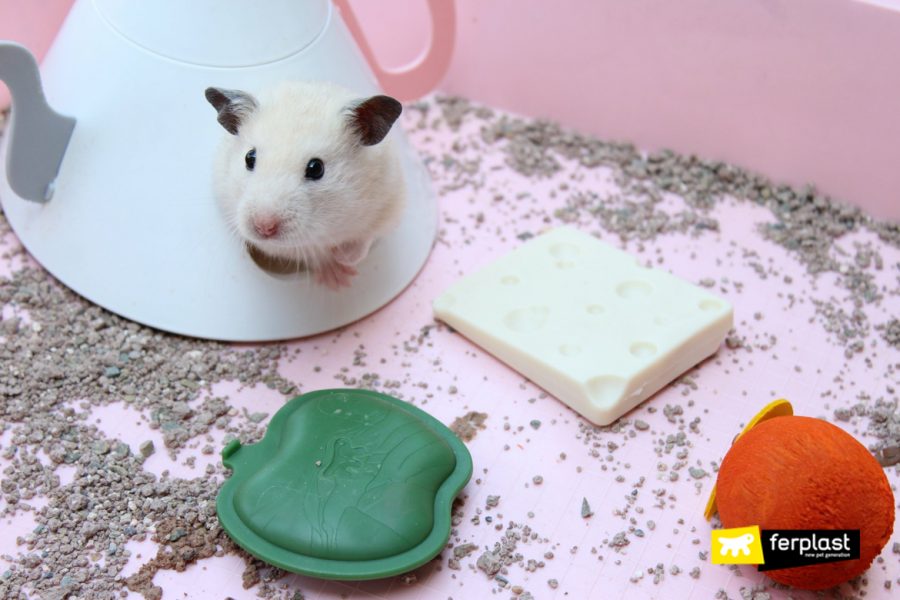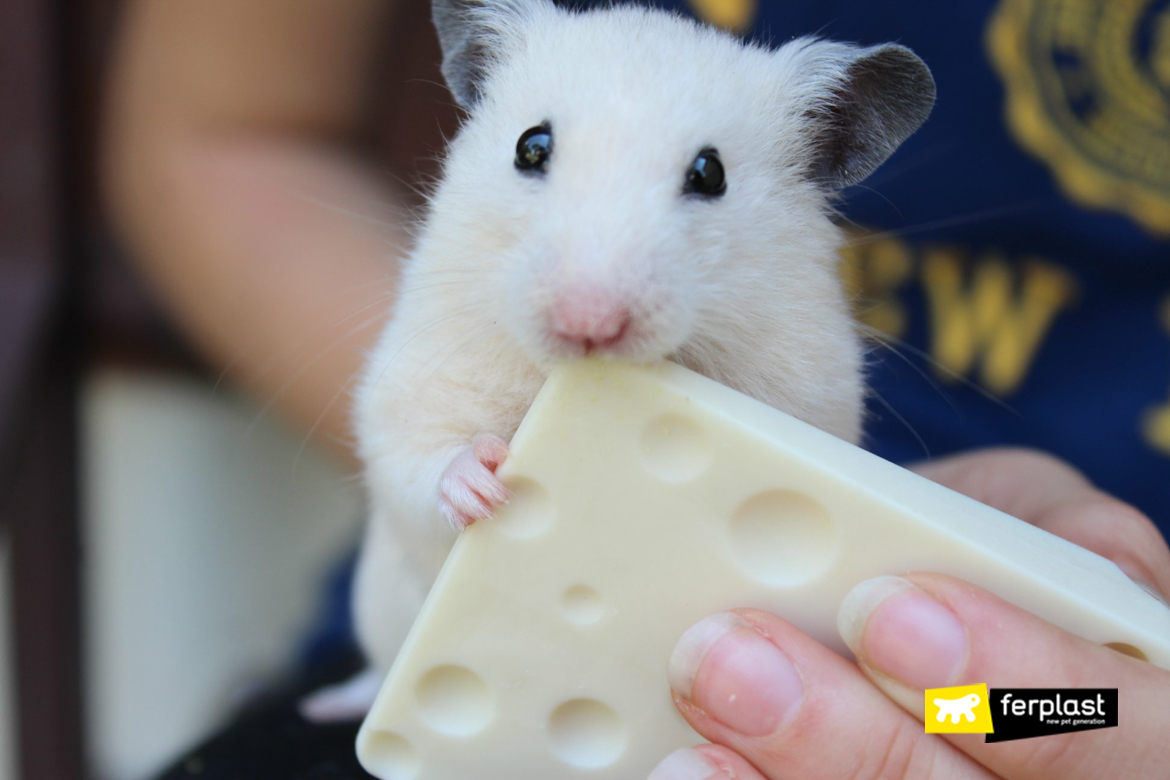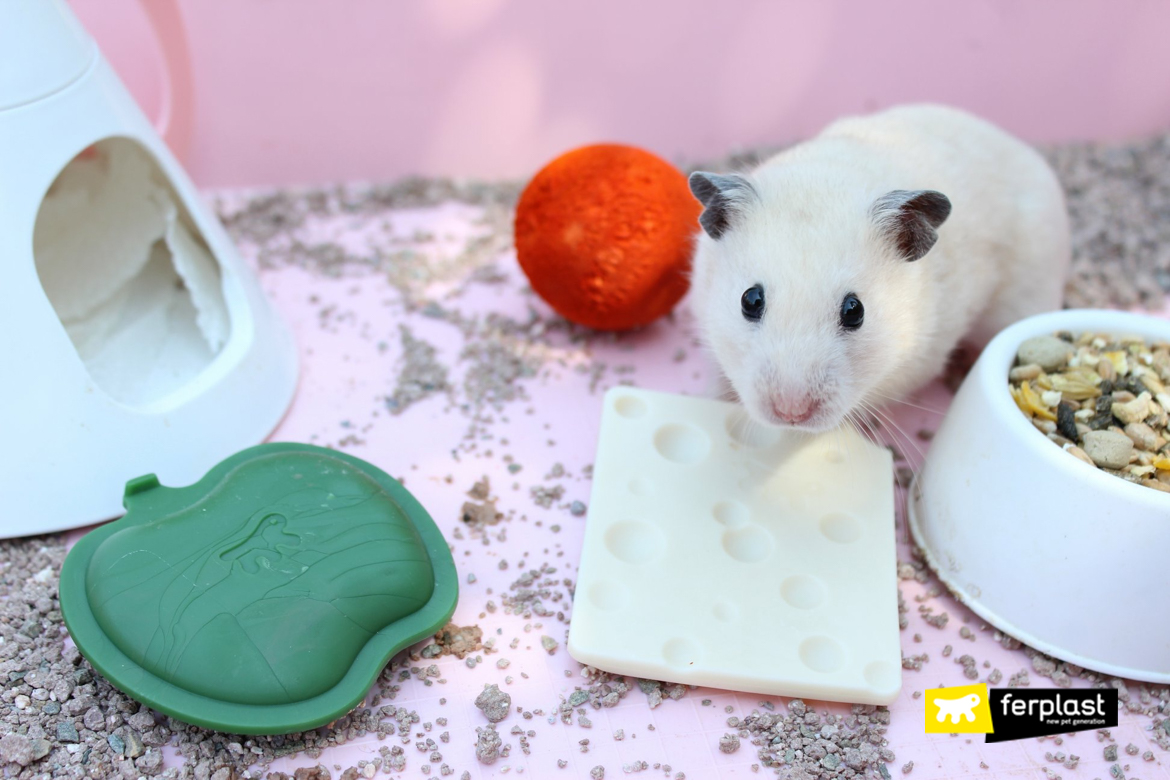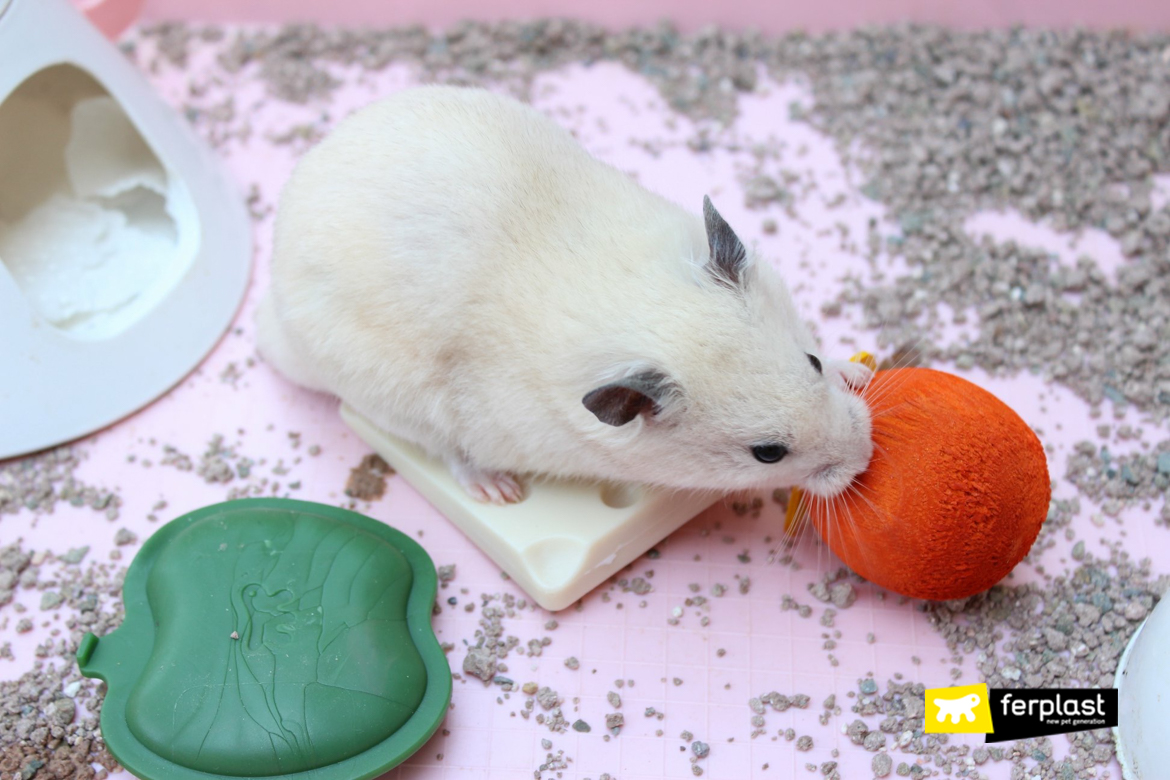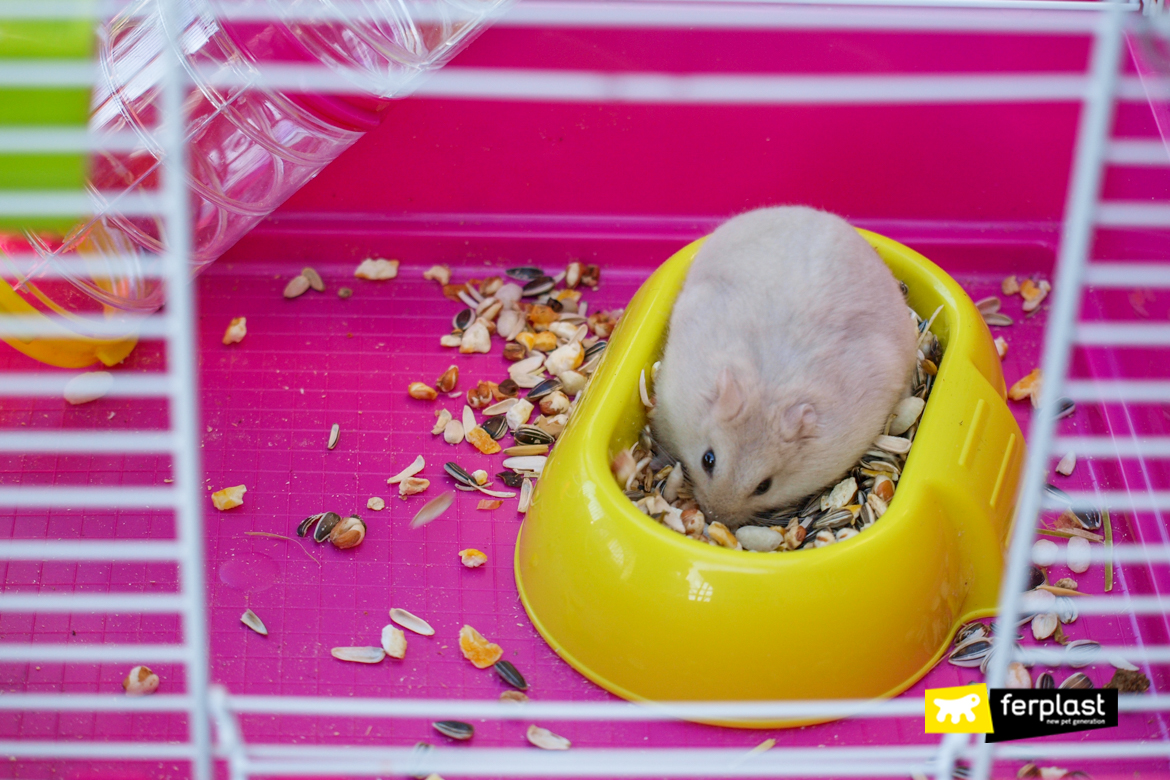Hamsters are members of the rodent family and as such have very strong incisors they use to gnaw or nibble on just about anything that crosses their path. In order to keep hamster teeth healthy and clean they need to be regularly checked, and this helps keep the hamster healthy too!
Hamster teeth
Hamsters have 16 teeth: two upper and two lower incisors with open roots, meaning they grow all the time, and molars, which all have closed roots. Hamsters are cute puffy cheeked little creatures that have neither canines nor premolars and their teeth are not white, but a yellow or orange colour. Another dental characteristic is that the lower teeth are longer than the upper teeth, so don’t let that scare you, it’s normal! What you do have to worry about is if their teeth get fractures, cavities or grow crooked. Then a trip to the vet is in order!
How to keep their teeth the right length
In the wild, rodents keep the length of their teeth in check by gnawing on leaves and branches they find on their daily meanderings, thus keeping a proper balance in their mouths. When they live in captivity it is our task, as their caretakers, to help keep the teeth at the right length. This is important because if they can’t close their mouths properly, they cannot nourish themselves properly, and this could harm their health. Just think, some scientists have calculated hamster incisor growth to be a millimetre every two days!
The best thing you can do is make sure your hamster has twigs from fruit trees – cut about a centimetre thick – to chew on. If finding fruit tree twigs is not an option, then you could get them chewing toys like Ferplast’s GoodBiteTiny & Natural line, toys made of non-toxic, biodegradable material that just beg to be gnawed on. Chewing and gnawing are important activities that go far in limiting excessive incisor growth, and the toys provide the added benefit that they are not extra food.
Taking care of cavities
Hamsters get cavities in their teeth too! And when they do, you must get them to the vet for treatment. Cavity prevention goes hand in hand with good oral hygiene, which in turn is based on proper nutrition: a well-balanced mix of soy seeds, spelt, millet seeds, sunflower seeds, oats and linseed goes very far in keeping the furry little creature in good health. Even better if you add some fresh and dried fruits and vegetables, just to make sure its nutrition is perfectly rounded.
If you have a hamster at home, do check its mouth about once a month, and if the hamster is a senior citizen, do so even more often as old teeth are weaker and break more easily.

